Duration: 6 Nights
Highlights: For those who love nature, this tour is a dream that will start at the valleys of Paro to the bustling streets of Thimphu, and end at the ancient paths of Punakha, where nature's heart beats in harmony with Bhutan's soul.
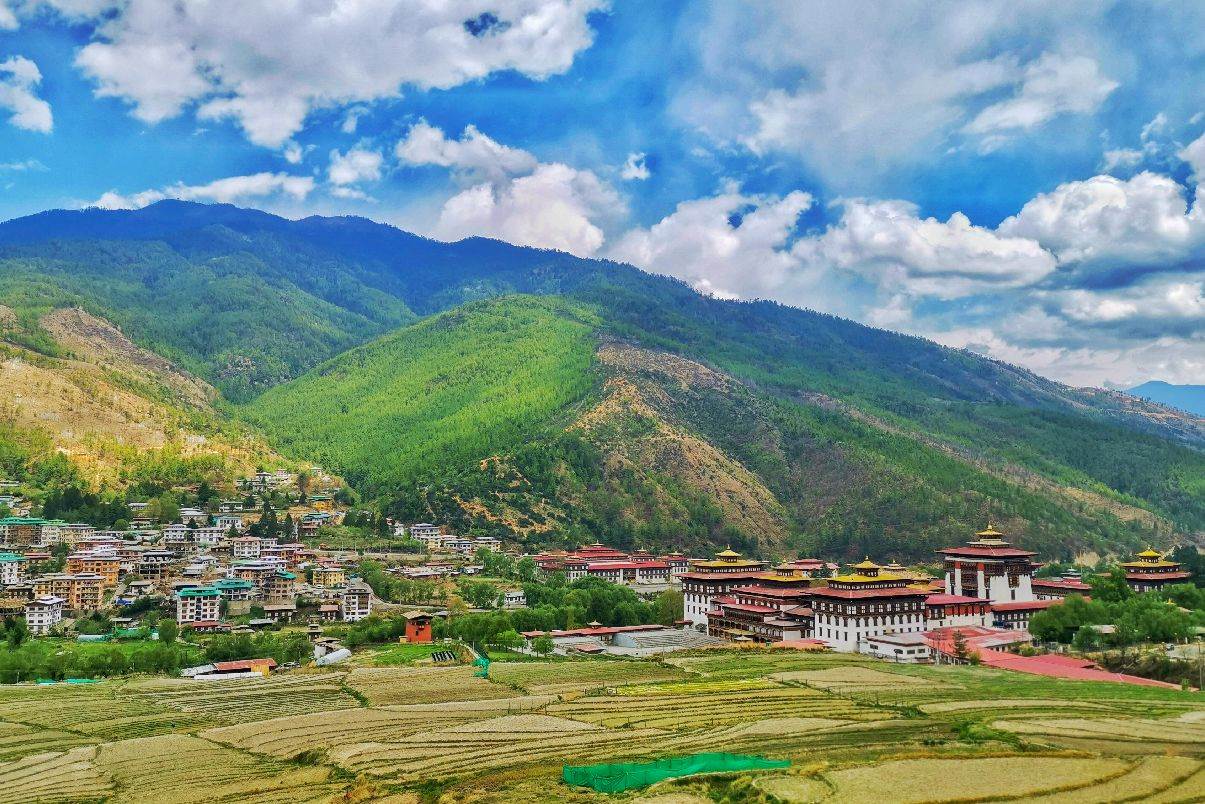
Tashichho Dzong, meaning “Fortress of the Glorious Religion,” is one of Bhutan’s most iconic landmarks. Located along the banks of the Wang Chhu River in Thimphu, it serves as the seat of Bhutan’s government and houses the Throne Room, the offices of His Majesty the King, and several key ministries. It’s also the summer residence of the central monastic body, led by the Je Khenpo. With its imposing whitewashed walls, golden spires, and ornately painted woodwork, Tashichho Dzong is a striking example of Bhutanese architecture. The surrounding gardens and courtyards offer a serene setting, especially when lit up in the evening. Visitors are welcome to explore certain areas of the dzong after office hours, making it not just a centre of political and religious life, but also a window into the living heritage of Bhutan.
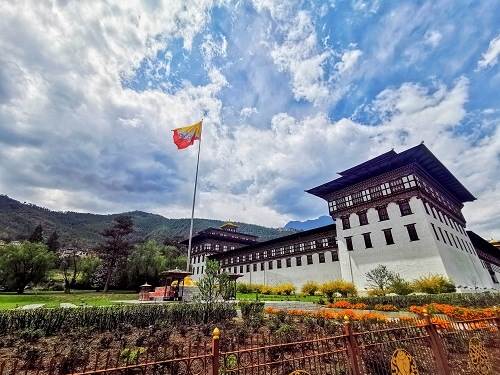
Strolling around Thimphu town offers a delightful blend of tradition and modern life in Bhutan’s capital. Start at Clock Tower Square, the lively heart of the city—adorned with carved wooden façades, prayer wheels, and water fountains—and a charming spot to linger while locals chat or browse the weekend market. From here, wander down Norzin Lam, Thimphu’s main street, where boutique shops, handicraft stores, and cafés invite you in. Along the way, admire traditional architecture—ornate wood carvings, colourful murals, and fluttering prayer flags—woven seamlessly into everyday life.
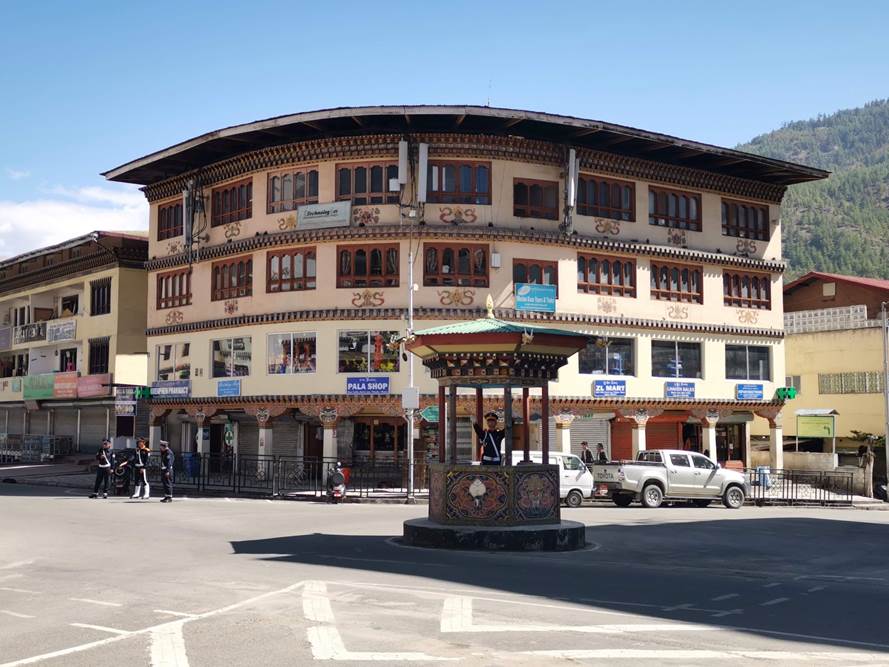
Towering above Thimphu Valley from the tranquil Kuenselphodrang Nature Park, the majestic Buddha Dordenma is a sight to behold. Standing at a staggering 51.5 metres, this golden statue is one of the largest seated Buddhas in the world—and it’s not just its size that impresses. Nestled inside are over 100,000 smaller Buddha statues, each crafted with the same devotion and detail. More than a monument, the Buddha Dordenma is a symbol of indestructibility and spiritual awakening, believed to bless the land with peace and harmony.
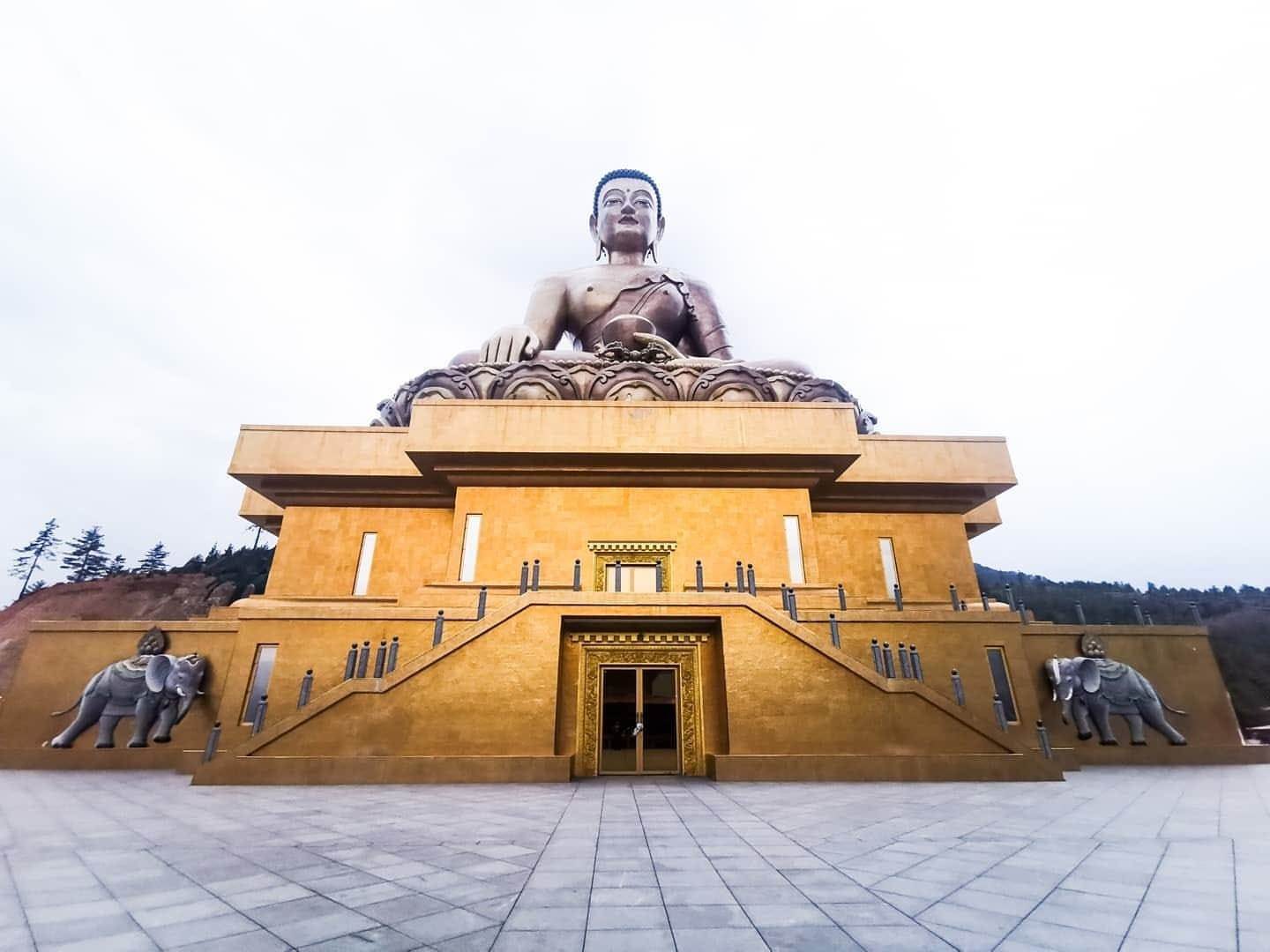
Immerse yourself in the spiritual rhythm of Thimphu with a visit to the National Memorial Chorten, where locals—especially the elderly—gather daily to walk in prayerful circles, spinning prayer wheels and murmuring mantras in a peaceful flow of devotion. Built in 1974 to honour the beloved Third King, this white-washed stupa is a living sanctuary. Step inside and you’ll find vibrant murals, intricate mandalas, and detailed sculptures that beautifully illustrate Buddhist teachings. If you're seeking serenity or a glimpse into Bhutanese spiritual life, this is a place that quietly leaves a lasting impression.
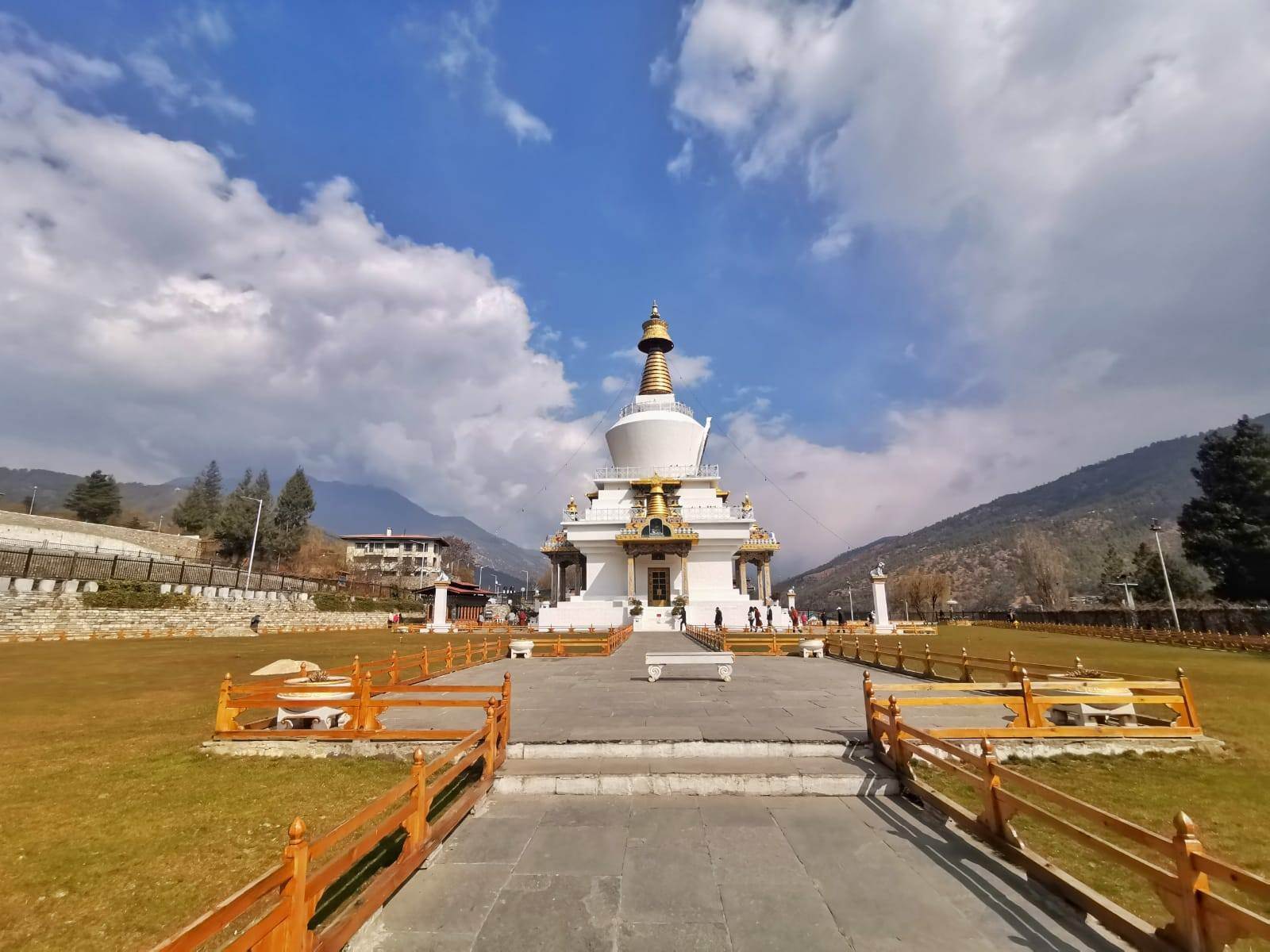
Just a short drive from Thimphu, Simtokha Dzong is Bhutan’s oldest surviving fortress, built in 1629 by Zhabdrung Ngawang Namgyal. Simtokha Dzong may be modest in size—but hidden among its sweeping courtyards lies a stunning secret: over 300 intricately carved slate panels lining the lower walls behind the prayer wheels. Each panel depicts a different Buddhist saint or philosopher, their serene faces and flowing robes capturing centuries of devotion and wisdom.

Visiting the Motithang Takin Preserve in Thimphu is a delightful and serene experience—it’s the national animal’s very own sanctuary, nestled just 15–20 minutes from the city centre. What began as a humble mini-zoo became something far more fitting: a forested 3.4-hectare reserve where takin, Bhutan’s unique goat–cow creatures, have chosen to stay even when released into the wild. It’s a charming, low-key wildlife encounter that captures Bhutan’s gentle spirit—perfect for families, nature lovers, and anyone curious about the country’s living symbols.
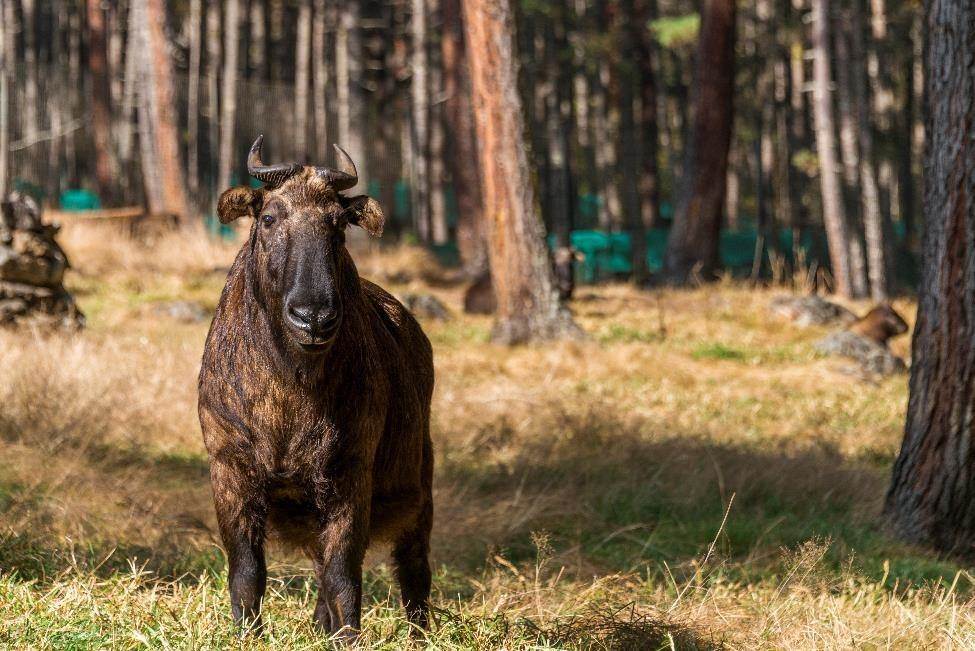
Tashichho Dzong, often called the “Fortress of the Glorious Religion,” is one of Thimphu’s most iconic landmarks—and a must-visit for anyone wanting to understand the soul of Bhutan. First built in 1641 and later restored by the visionary Third King, Jigme Dorji Wangchuck, this grand fortress sits majestically along the banks of the Wang Chhu River. By day, it functions as the seat of Bhutan’s government and religious affairs, housing key ministries, His Majesty’s office, and the central monastic body. By evening, it transforms into a serene and majestic sight, its golden roofs glowing against the backdrop of the setting sun. You can stroll through its beautifully maintained courtyards, admire traditional Bhutanese architecture, and get a rare glimpse into the harmonious blend of spiritual and administrative life.
-656.jpg)
Nestled in the charming village of Sopsokha, Chimi Lhakhang—also known as the Fertility Temple—stands atop a gentle hill near Lobesa. Built in 1499 by Ngawang Choegyel, the 14th Drukpa Hierarch, the monastery is dedicated to the revered and unconventional saint, Lama Drukpa Kunley, famously known as the Divine Madman for his unorthodox teachings and eccentric behavior. To reach the temple, enjoy a scenic 30-minute walk through terraced paddy fields and a quaint village path. Pilgrims from all over the world visit Chimi Lhakhang to seek blessings for fertility, and many couples have returned to share stories of their answered prayers. A visit here offers not only cultural insight but also a peaceful connection with Bhutan’s spiritual traditions.
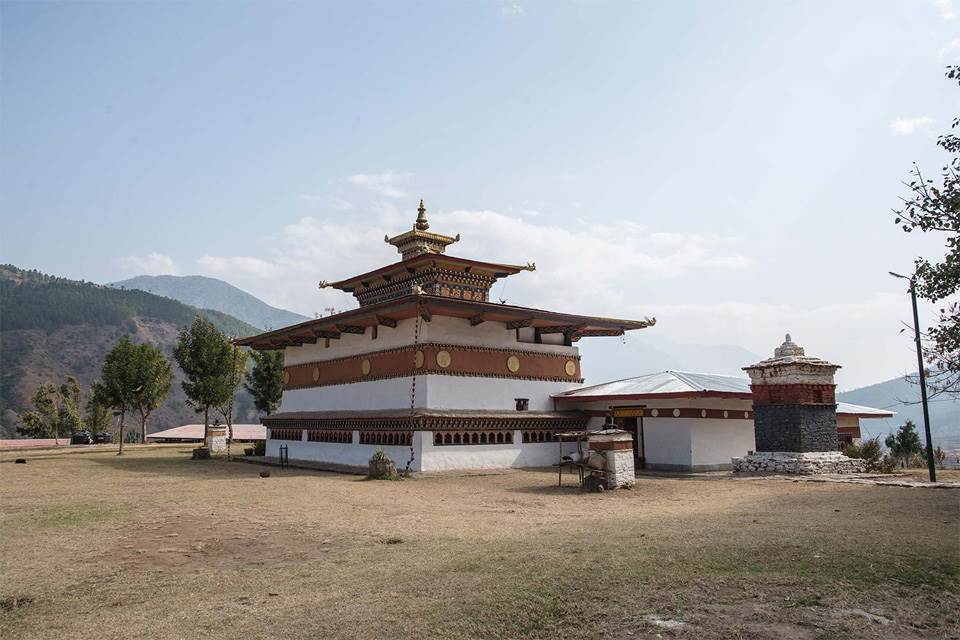
Perched at an altitude of 3,100 metres, Dochula Pass is one of Bhutan’s most serene and awe-inspiring mountain passes. Often cloaked in mist and prayer flags fluttering in the breeze, it’s a place where time seems to slow down. The pass is adorned with 108 memorial chortens, built in honour of Bhutanese soldiers, and offers panoramic views of the snow-capped Himalayan range on clear days. Whether you're pausing for reflection or simply soaking in the stillness, Dochula invites you to breathe deeply, feel the peace, and reconnect with the beauty of the journey.
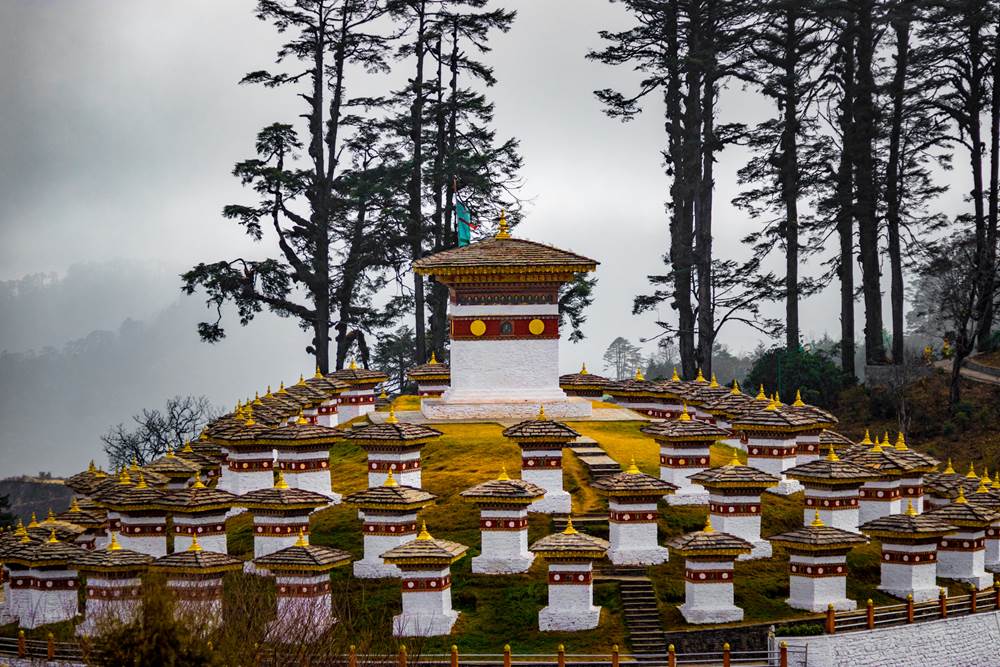
Stretching 160 metres across the Pho Chhu River, this is the longest suspension bridge in Bhutan. From its swaying span, you’ll be treated to breathtaking views of the majestic Punakha Dzong and the lush Pho Chhu Valley—an unforgettable vantage point for photos and quiet reflection.
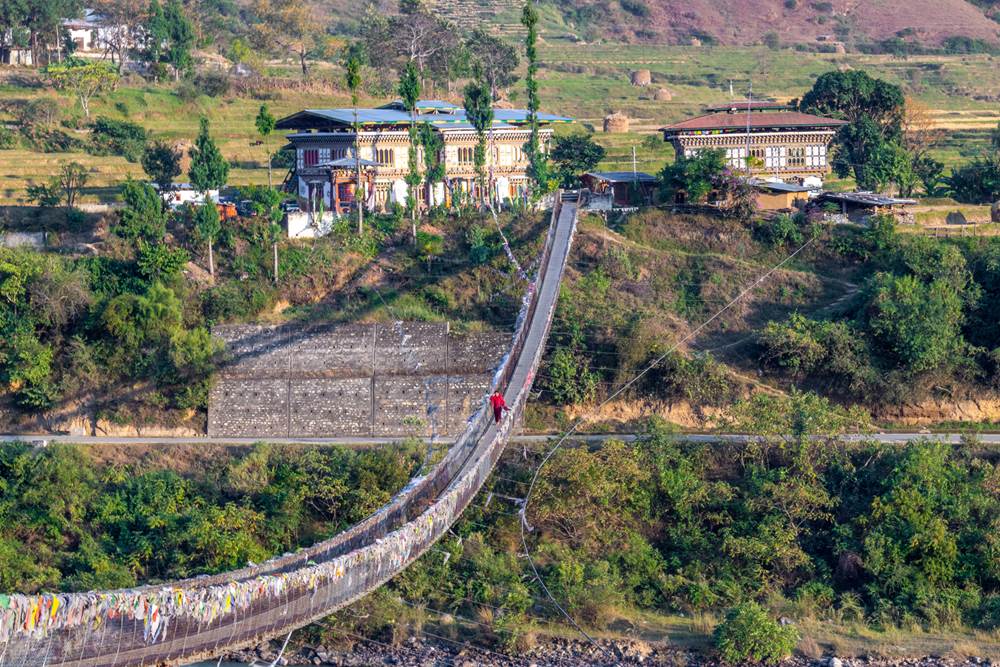
Step into the heart of Bhutanese history and spirituality with a visit to Punakha Dzong, one of the most iconic and breathtaking fortresses in the country. Nestled at the sacred confluence of the Pho Chu and Mo Chu rivers, this architectural masterpiece was built in 1637 by Zhabdrung Ngawang Namgyal, the great unifier of Bhutan. As you cross the traditional wooden cantilever bridge and approach the grand whitewashed walls, you’ll be walking the very grounds where Bhutan’s dual system of governance was first introduced—and where the first King, Gongsar Ugyen Wangchuck, was crowned in 1907. Despite enduring fires and an earthquake, the dzong stands today fully restored—thanks to the vision of the 4th King, Jigme Singye Wangchuck. It now serves as the winter residence of the Je Khenpo, the spiritual head of Bhutan, and houses a monastic community of over 1,000 monks. Marvel at the intricate woodwork and artistry that adorn the halls and courtyards, and let the sacred energy of this historic site leave a lasting impression on your journey.
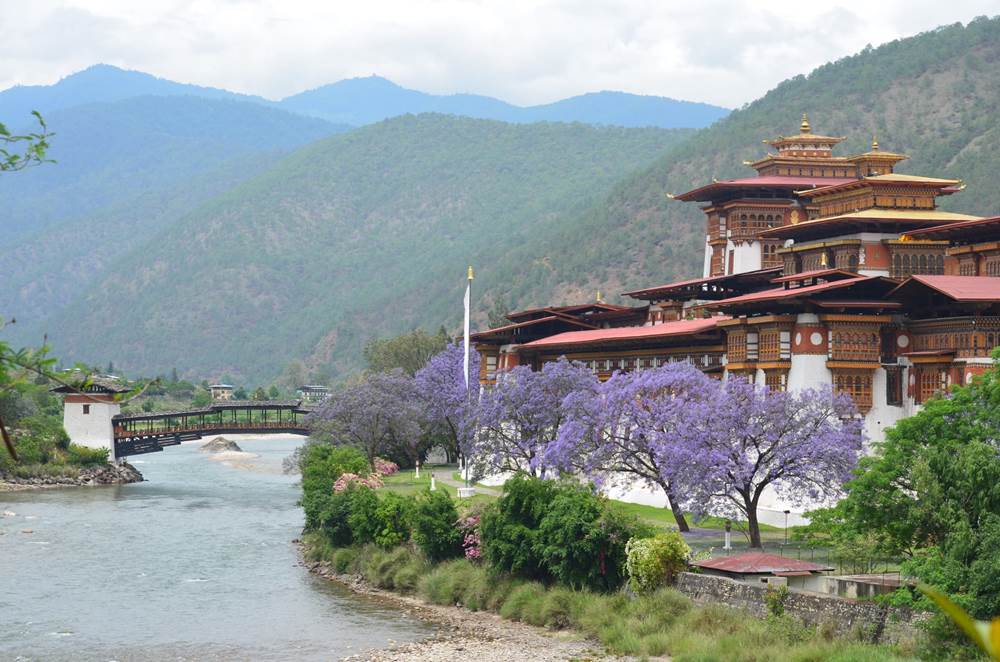
At 1300 years old, Kyichu Lhakhang is one of Bhutan’s oldest and most sacred temples, believed to have been built in the 7th century by Tibetan Emperor Songtsen Gampo as part of a spiritual mission to subdue a demoness and spread Buddhism. Located just north of Paro, it is often referred to as the “Sacred Jewel of Bhutan.” Over the centuries, the temple has been expanded and visited by many great masters, including Padmasambhava. It's a peaceful and deeply spiritual place, cherished by pilgrims and visitors alike.
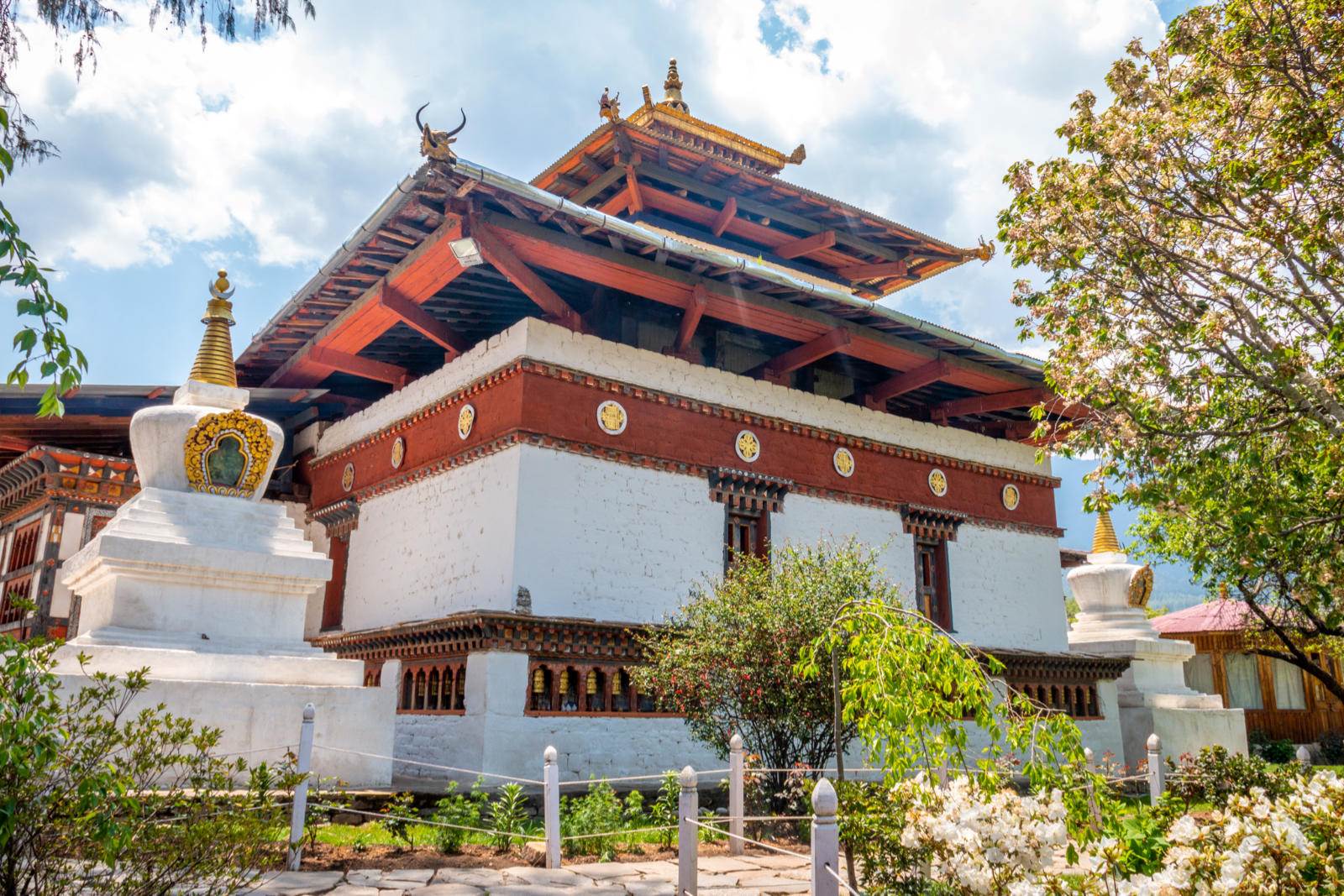
Paro Town is a charming and picturesque valley town nestled along the Paro River, surrounded by forested hills and traditional Bhutanese architecture. As the gateway to Bhutan—home to the country’s only international airport—Paro offers a relaxed blend of culture, history, and local life. The town is dotted with whitewashed shops, cosy cafés, handicraft boutiques, and traditional wooden buildings, all set against a stunning Himalayan backdrop. It's a good place to shop for souvenirs and mementos.
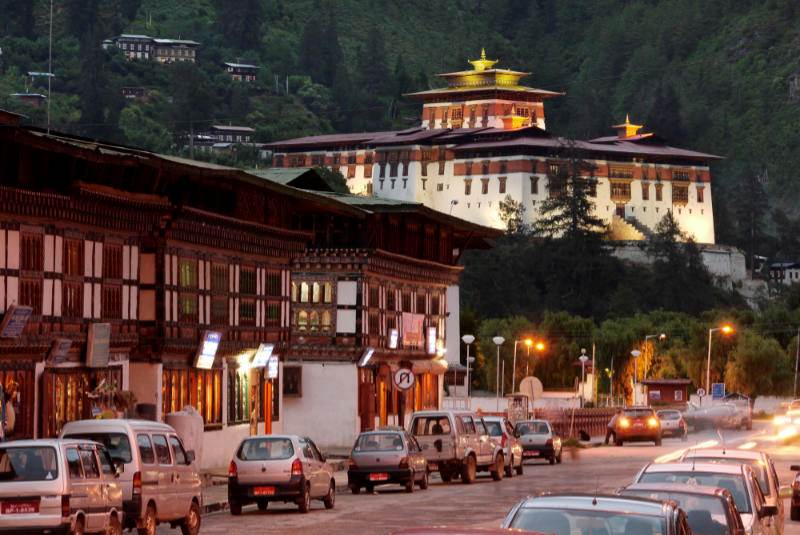
Make a memorable stop at Tachog Lhakhang, a sacred 14th-century temple founded by the legendary Tibetan yogi and master bridge-builder, Thangtong Gyalpo. Reached by a short, scenic walk across a traditional iron chain bridge, the temple rests gracefully on a hillside, offering serene views over the glistening Paro River below. Legend has it that Thangtong Gyalpo meditated here for seven days and received a vision to build the temple, making this spot spiritually significant. The name Tachog Gang, meaning “Hill of the Excellent Horse,” reflects its sacred geometry and auspicious location. Inside, you'll find unique wall paintings and statues that tell the story of a dakini and her divine child, Dewa Zangpo. This serene detour offers not only a glimpse into Bhutan’s mystical past but also stunning views and a peaceful atmosphere perfect for quiet reflection. Duration: 30–45 minutes Difficulty: Easy, short walk (some uneven steps and crossing a suspension bridge)
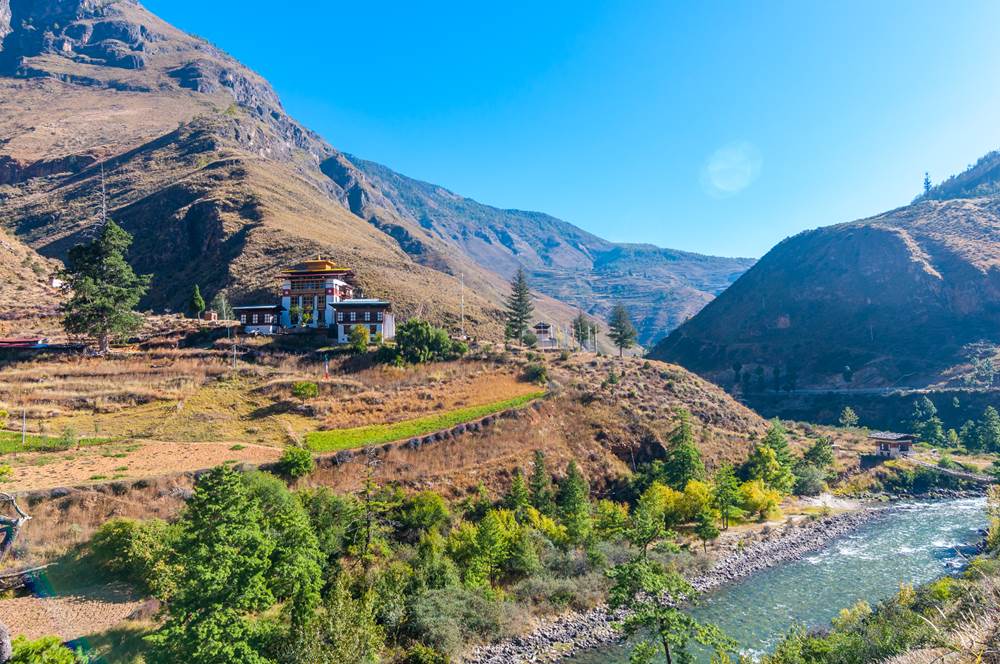
Start early for the scenic drive to Chele La Pass—at 3,988 m, the highest motorable road pass in Bhutan—winding 35 km uphill through fragrant blue pine and vibrant rhododendron (Etho Metho) forests. On a clear day, you’ll be rewarded with sweeping views of Mt Jhomolhari (7,314 m), Bhutan’s second-highest peak, and a breathtaking panorama of the Haa Valley, a region that remained closed to foreigners until 2002 due to its proximity to the Sikkim and Tibet borders. For a more leisurely sightseeing experience, you can choose to descend from Chele La into the serene Haa Valley. Should winter snow or ice make the pass inaccessible, your guide will recommend an alternative excursion to ensure the day remains just as memorable.
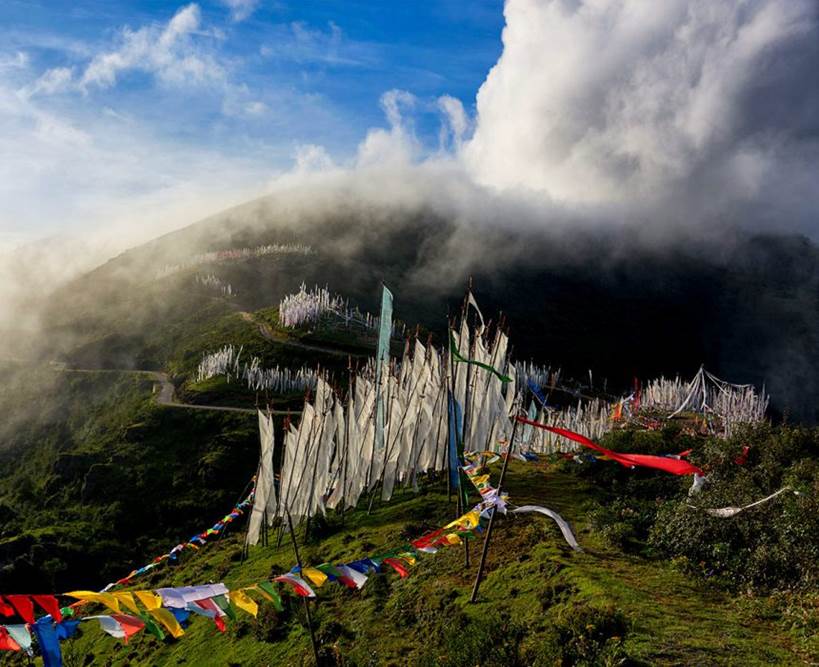
Haa Valley—often called Bhutan’s “Hidden Gem”—is a pristine, little-visited paradise tucked between the towering peaks of the western Himalayas. Officially opened to foreign visitors only in 2002, the valley has retained its authentic charm, unspoiled landscapes, and deep-rooted traditions. Here, emerald rice fields stretch beneath snow-capped mountains, and traditional Bhutanese farmhouses dot the countryside. Life in the valley moves at a gentle pace, offering visitors a rare glimpse into Bhutan’s rural way of life. Recognised for its untouched beauty and cultural richness, Haa Valley truly lives up to its reputation as one of Bhutan’s most treasured hidden gems.
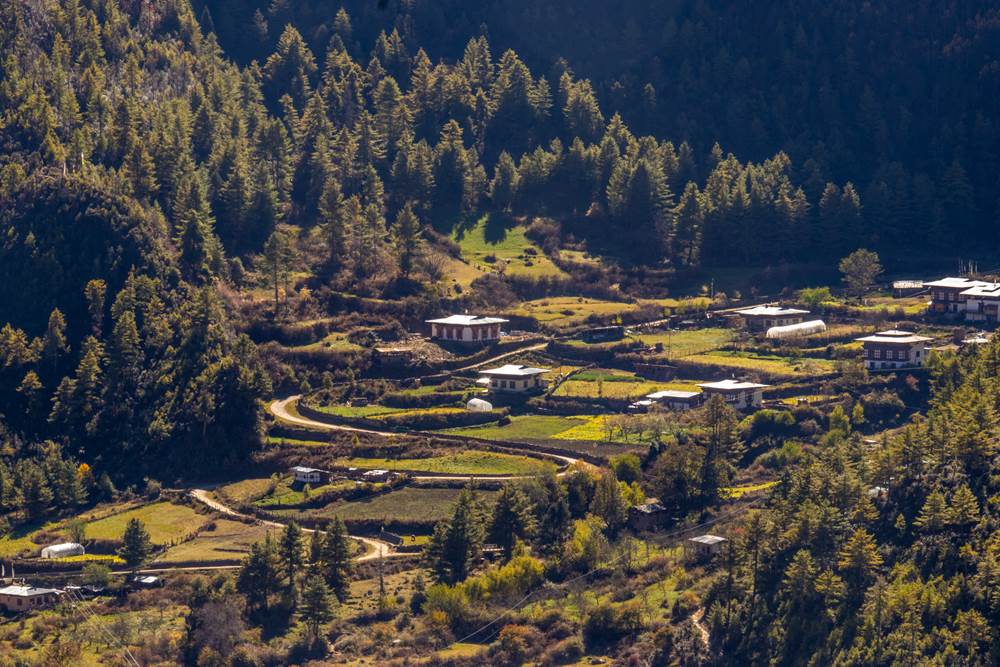
They say, "a visit to Bhutan is not complete without climbing up to the Tiger's Nest". Taktsang Monastery, famously known as the Tiger’s Nest, is Bhutan’s most iconic landmark, dramatically perched on a cliffside 3,120 metres above sea level in Paro Valley. According to legend, Guru Padmasambhava flew to this site in the 8th century on the back of a tigress and meditated in a cave that now lies at the heart of the monastery. Built in 1692, the complex includes temples, meditation caves, and stunning viewpoints that seem to defy gravity. Reaching the monastery involves a scenic 2–3 hour hike through pine forests and fluttering prayer flags—a spiritual and physical journey that rewards you with breathtaking views and deep serenity.
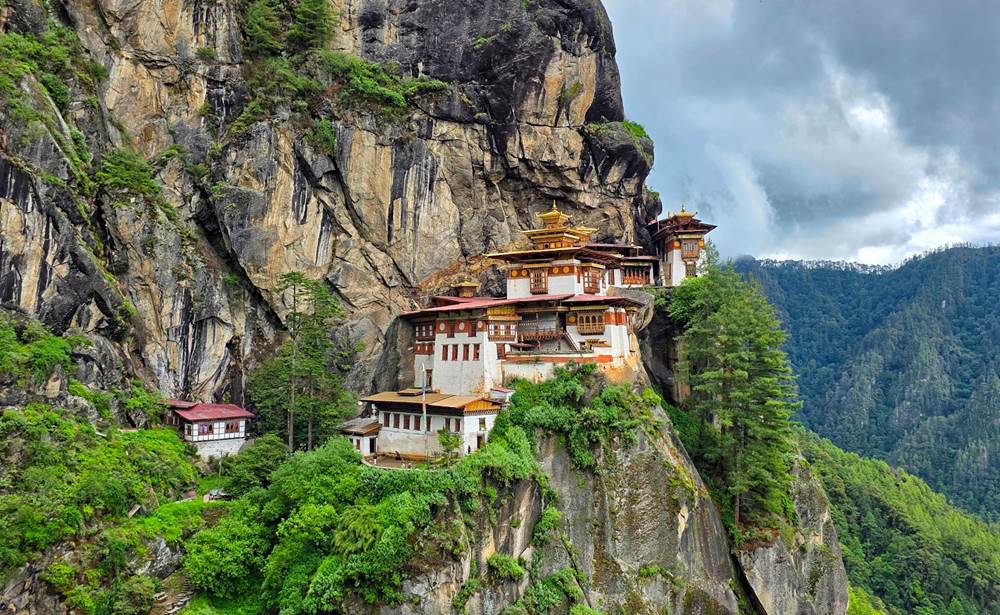
Sink into the comforting warmth of a traditional Bhutanese hot stone bath—an age-old ritual where nature, healing, and heritage come together in perfect harmony. As fire-roasted river stones are carefully dropped into a wooden tub filled with mineral-rich water, they crackle and hiss, releasing therapeutic heat and minerals believed to soothe tired muscles and boost circulation. Infused with fresh mountain herbs known for their calming aromas and medicinal properties, the bath envelops you in a cocoon of peace and restoration. In the quiet embrace of a rustic bathhouse, you’ll feel stress melt away, leaving only stillness and serenity behind. Additional charges apply.
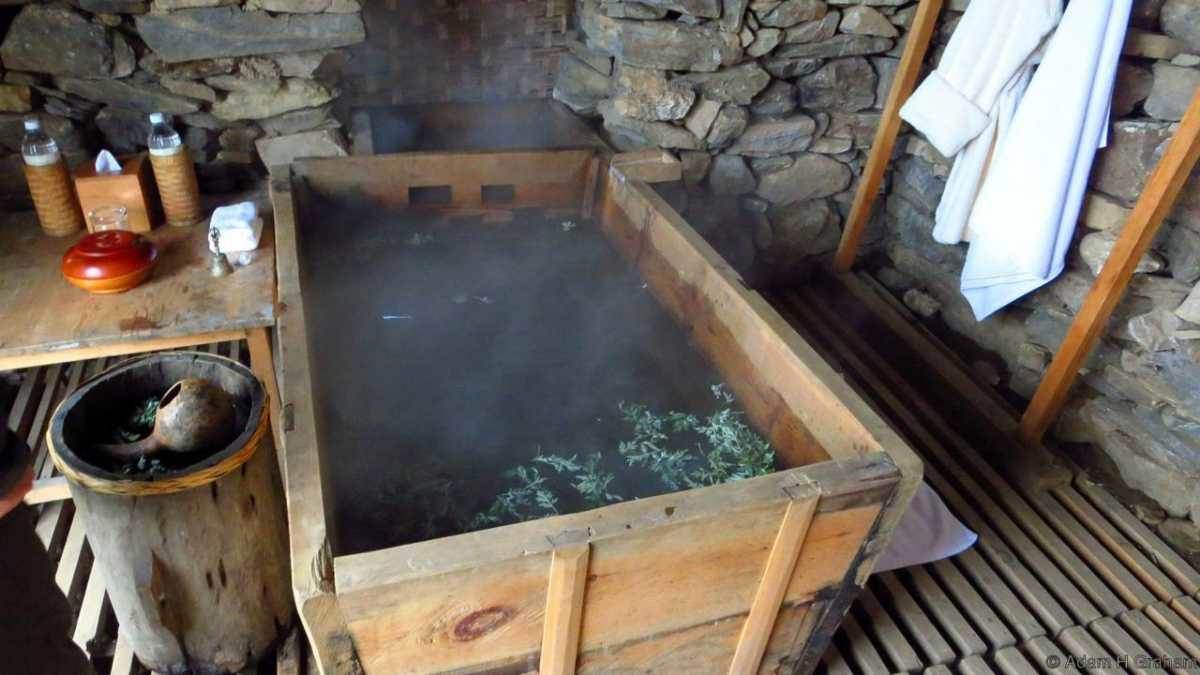
Travel Tips
Druk Asia
Bhutan Office
Singapore Sales Office
Kuala Lumpur Office
Copyright © 2024 Druk Asia - All Right Reserved
Travel Tips
Druk Asia
Bhutan Office
Singapore Sales Office
Kuala Lumpur Office
Copyright © 2024 Druk Asia - All Right Reserved
